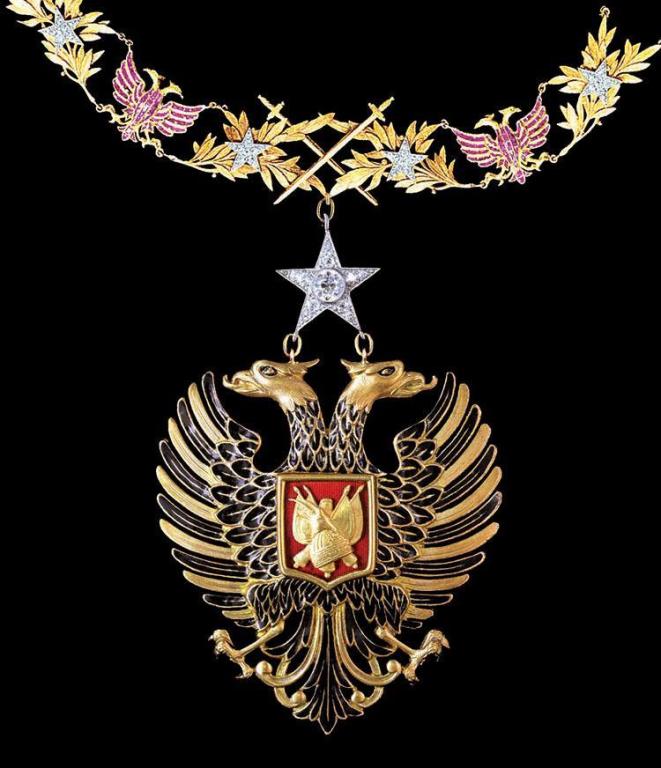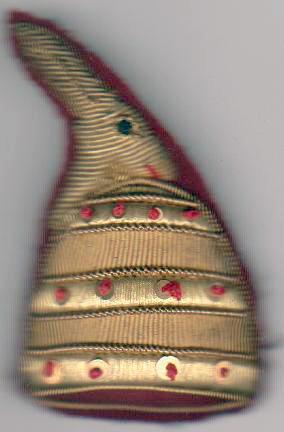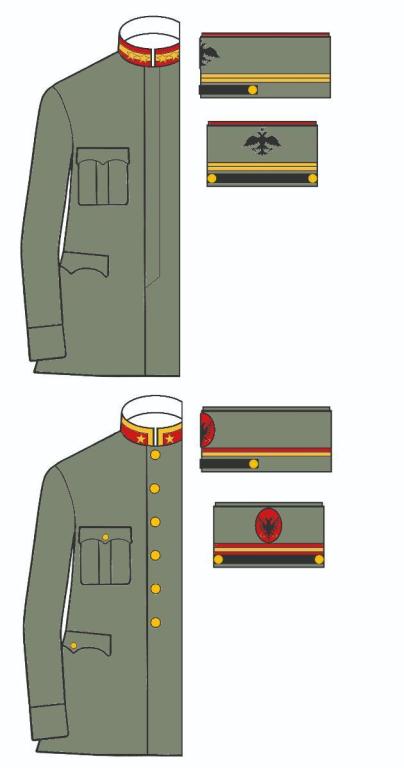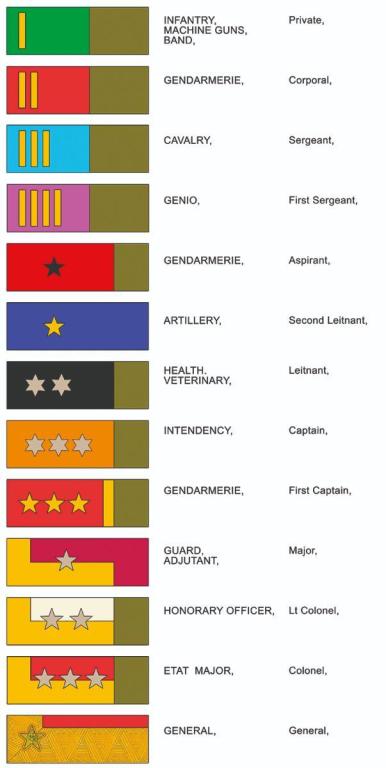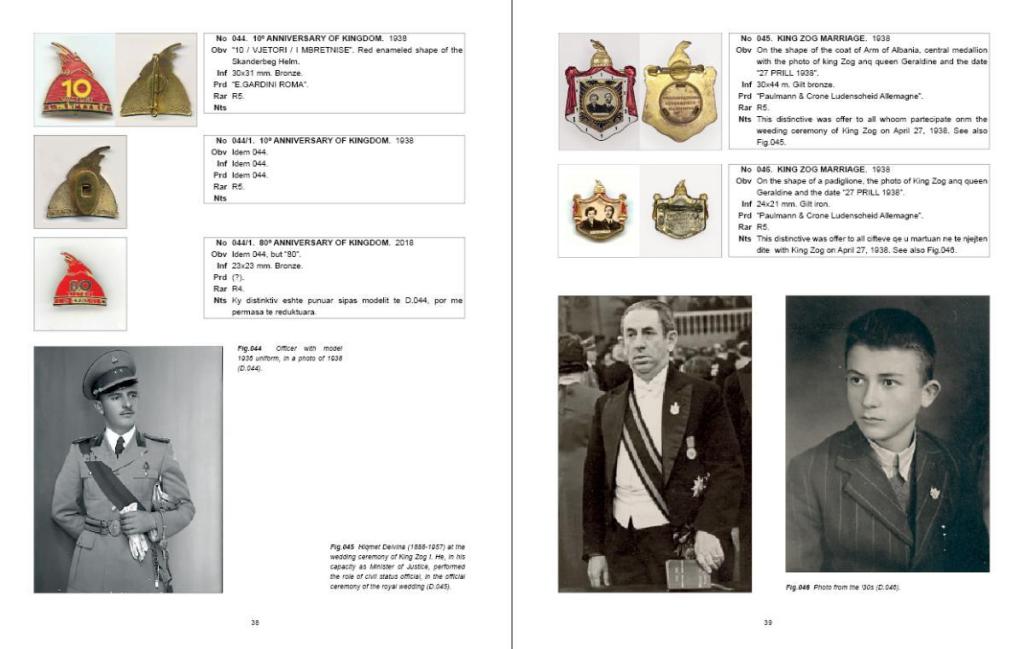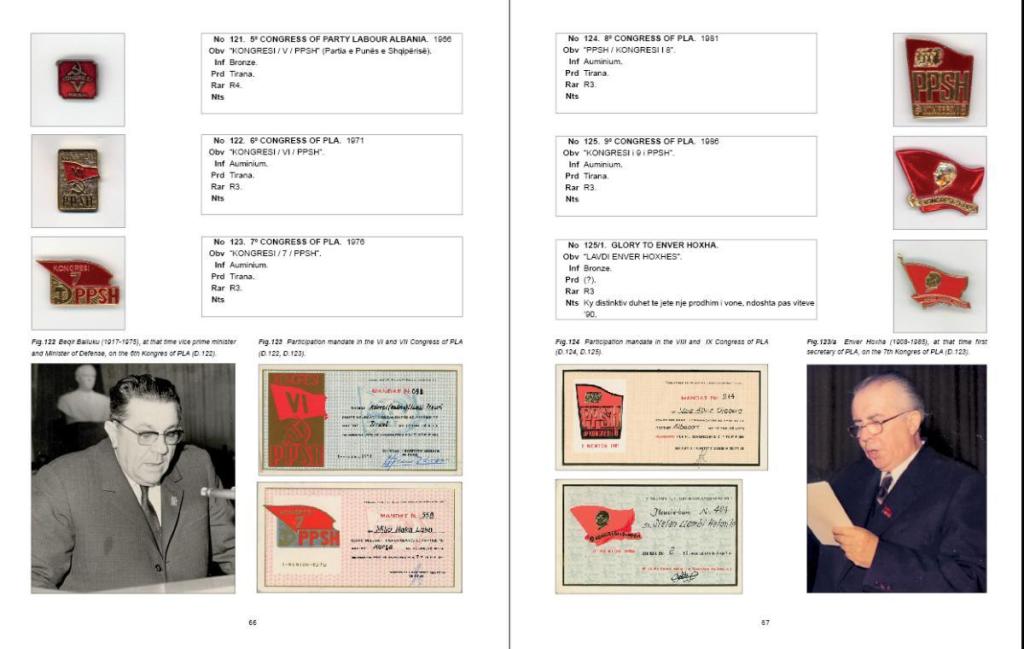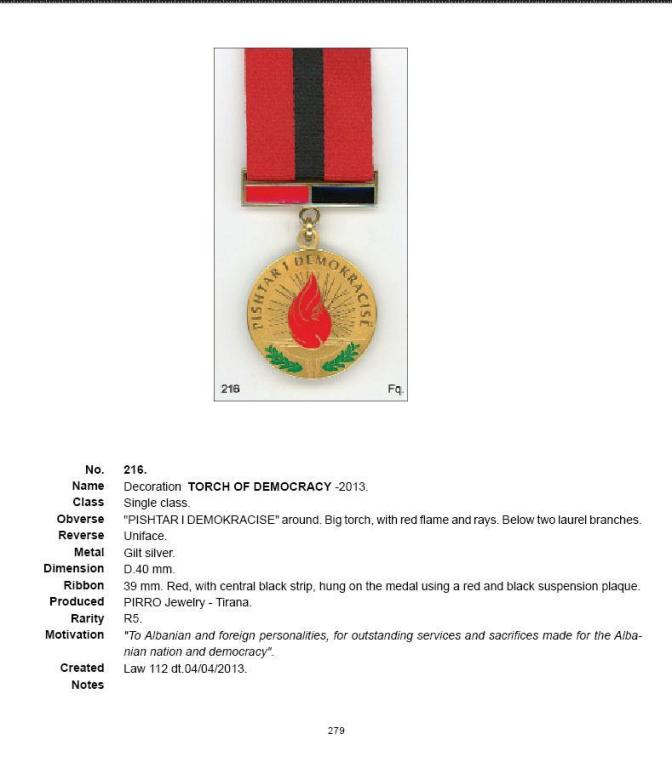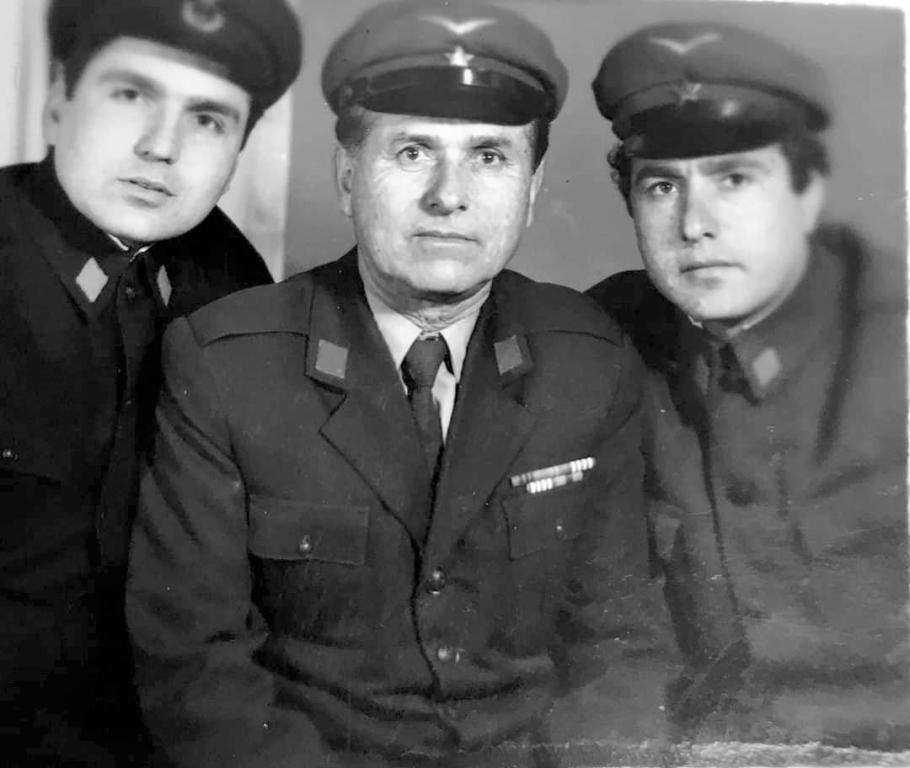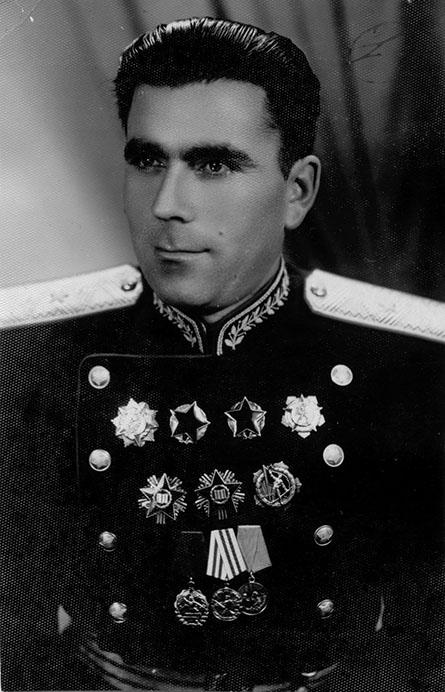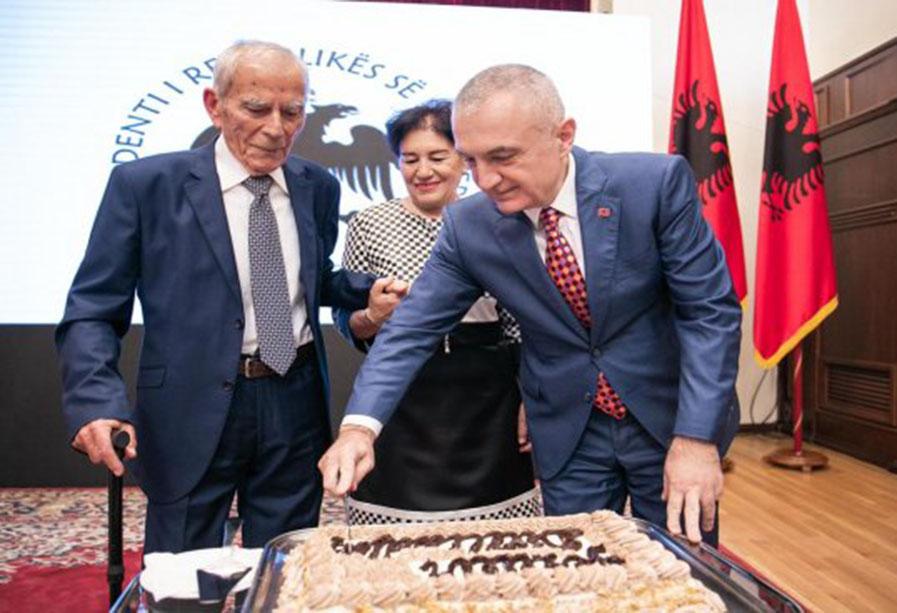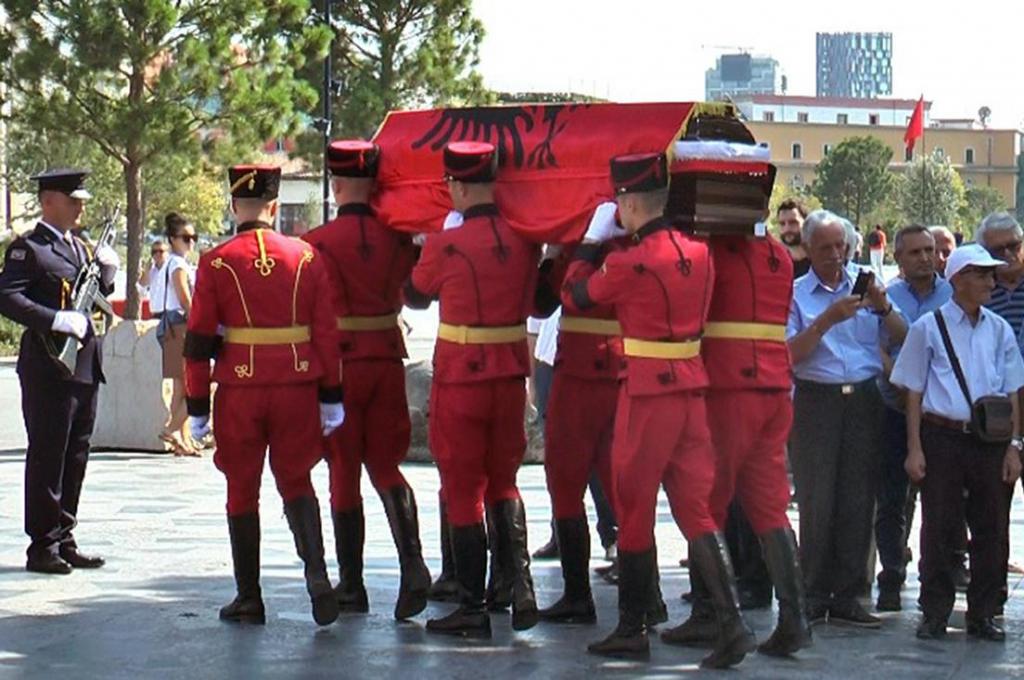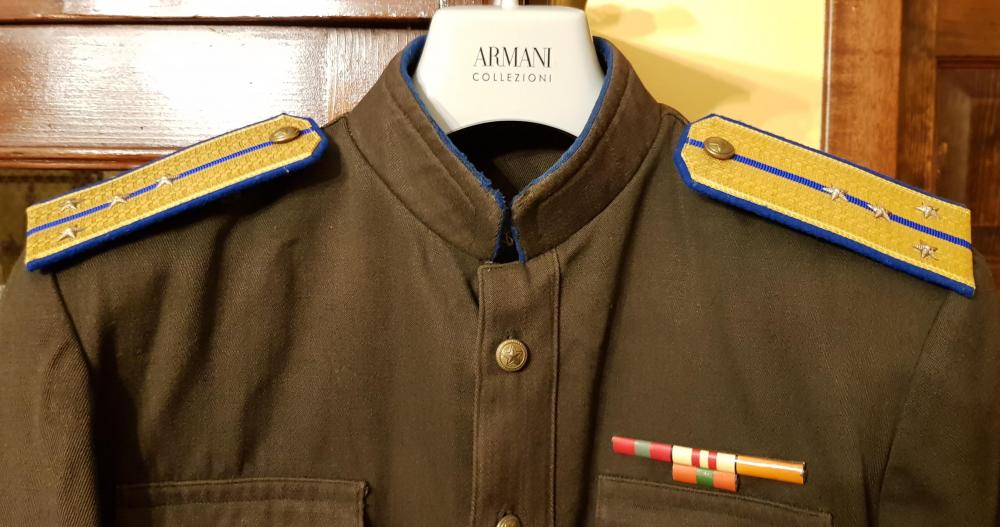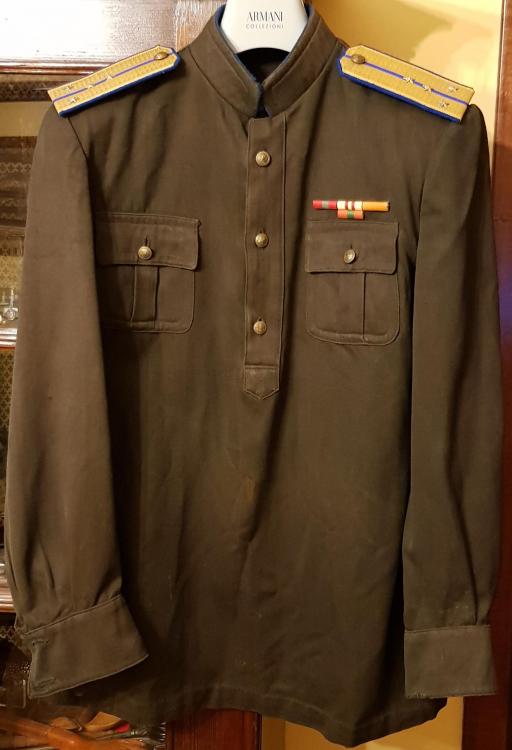-
Posts
288 -
Joined
-
Last visited
-
Days Won
5
Content Type
Profiles
Forums
Blogs
Gallery
Events
Store
Everything posted by Zaim Qyteza
-
The publication is from the Bank of Italy and is available to buy online. In the part that belongs to Albania, it contains the Cross of the Order of Besa and the Collar of Albania, both belonging to Mussolini and accompanied by the corresponding articles that describe the itinerare of them in these 8 decades. Finally, after 8 decades we have an accurate image of the Collar of Albania, Type 1.
-
Hello to everyone! After several years of silence in this discussion, finally something new! Finally, the Bank of Italy published a special issue for the MEDALS OF MUsSOLINI, where several pages are also dedicated to COLLAR OF ALBANIA. It is the absolute first time that detailed photos of this Kollar appear and I wanted to share this information with you. Regards, Zaim https://www.shop.ipzs.it/it/tracce-di-metallo3000046091.html
-
Hi Seb, But can you tell what chinese medal is this? Zaim
-
Dear, John, 1. First of all, it is important to give a clear scheme of the periods of the Albanian state: -The First Monarchy, 1912-1914: The period when Albania was recognized as an Independent Principality, until the departure of Prince of Wied. - The First Regency, 1918-1924: The Period from the Congress of Durres which renewed the monarchical system of the state, until the fall of Fan Noli’s government. - The First Republic, 1925-1928: The Period of Ahmed Zogu’s Republic. -The Second Monarchy, 1928-1939: The Period of Zog I’ Kingdom. - The Third Monarchy, 1939-1943: The Period of the reign of Vittorio-Emanuele III, until Italy's armistice. - The Second Regency, 1943-1944: Regency during the German invasion. - The Second Republic, 1946-1990: The Period from the announcement of PRA (The People’s Republic of Albania, RPSH), until the announcement of political pluralism. - The Third Republic, 1991- : The Period from the April 1991’s elections onwards. 2. Regarding your request, I am giving you a table of the rank system of uniforms M.27. This table is part of a book that I am writing about the History of Albanian Uniforms, a book which will be completed I believe in 20 or 30 years 😀. Regards,, Zaim
-
Hi Paja, My compliments. Very beautiful! Zaim
-

ALBANIA, HELP FOR TERM !
Zaim Qyteza replied to Zaim Qyteza's topic in Southern European & Balkan States
Thank you Markon and Megan. Is the term "Distinctive" used in English for these types of objects? In Albanian, we call these objects "Distiktiv". In Italian they are called "Distintivo". You say that the most correct term in English is "Insignia". Am I correct? But on the net I see that the term "Badge" is also used. For example "Soviet school badges". I thing that the term "Badge" refers mainly to badges in clothe. While the term "Insignia" refers to metal signs. Am I right? Regards, Zaim -
Hi to all, I am finally finishing the "CATALOG OF ALBANIAN …". 🙂 This is my problem, I don't know what term to use, Distinctives, Badges or any other. The term "badge" is very general, hat badge arm badge, etc. The term "Distinctives" is propably inpropriate. Please if you can help me. To guide you, I am attaching some of its pages here. Regards, Zaim
-

Albanian officer jacket M75
Zaim Qyteza replied to Euronymous's topic in Southern European & Balkan States
Hi Euronymous, The M.66 uniform had only one type of jacket, the one with a closed collar. The M.66 jacket was created under the Chinese influence of that period. The M.75 uniform provided that along with it, jackets with an open collar were reintroduced. In this model, the jacket with a closed collar was for the training uniform. The jacket with an open collar was for the office uniform. The officers of your picture, wear M.66 Uniform, around 1970. This is understood by the hat they wear, which has a shelter covered with stuff. This type of hat was introduced on 1969. What is the difference between a M.66 with closed collar jacket and an M.75 closed collar jacket? The M.66 has buttons on the edge of the shoulder straps. In this picture, you can see three officers in M.75 uniform (w/o buttons on the shoulder straps). Regards, Zaim -

Socialist Albania soldier ushanka ?
Zaim Qyteza replied to Euronymous's topic in Southern European & Balkan States
This is original. -

Need some help with Italian insignia
Zaim Qyteza replied to Peppe864's topic in Southern European & Balkan States
Hi Peppe, It is the jacket of a lieutenant-colonel of 29-th infantry Division Piemonte, of Italian Royal Army around 1940. Lieutenant-colonel: Two stars and the golden strip around the epaulette. Infantry: Red pipes around the epaulette and the button with the trophy of infantry. Division Piemonte: Red mostrine on the colar. Regards, Zaim -
Hi to all, Can anyone give me any information about this soviet dagger. I find it here on internet. Thanks in advance, Zaim
-
Hi to all, This is an albanian major in uniform model 1952. The picture is around 1960. The medal marked is not albanian one. Looks like something Chinese, or Korean, or Vietnamese. Or maybe it's from some Eastern European country. Can anyone help me identify him? Thanks in advance, Zaim
-

Exceptional Albanian item coming up for auction
Zaim Qyteza replied to Bob's topic in Southern European & Balkan States
Hi Bob, II think there is no connection between this object (I can't call it a "decoration") and Marshal Tito. Tito was decorated by General Hoxha with the People's Hero, during Hoxha's visit to Belgrade in 1946. At that time, the first type of People's Hero decoration was produced and it was not necessary for Hoxha to give Tito such a primitive product. , as this one is appearing at auction. I believe that this object is a fantasy production with a distant resemblance to the Collar of Albania, made by a private person. Regards, Artan -
Hi all, There is a list of 170 decorations of "Hero i Popullit" and another of about 485 decorations of "Hero i Punes Socialiste". There is no "depot stock" for these decorations. From those data, a discount of about 20% should be made, which is given only the diploma not accompanied by the respective medal. Another discount of about 20%, must be made for melted medals. Thus, I believe that there should be about 100 People's Hero and about 350 Socialist Labor Hero. Regards, Zaim (ps. attach the collection of a friend of mine)
-

STRANGE SOVIET JACKET IN ALBANIA
Zaim Qyteza replied to Zaim Qyteza's topic in Russia: Soviet: Other Militaria
O Kallarati, me ndje, por po ja fut kot. Mos u perzje ne nje fushe qe nuk e njeh. Ajo qe ke sjelle ti, eshte gjimnastorka standart qe e njeh gjithe dynjaja. Ajo qe kam sjelle une, ka xhepa oficeri, pra te jashtem, dhe jake oficeri, pra pa kopsa. Z. -

STRANGE SOVIET JACKET IN ALBANIA
Zaim Qyteza replied to Zaim Qyteza's topic in Russia: Soviet: Other Militaria
Hi to all, After 57 views, and no help, even from forumist experts in soviet militaria?!! Zaim -
Hi to all, In my collection I have this strange jacket. It has the body structure of a gymnastorka, and the details (collar piping, cuffs) of an officer jacket. At first I thought it might be a manufacturer mistake, but there's slight fraying in the middle area, indicating that it was worn with a belt. It is obvious this jacket was already produced to be like this, as it does not look like an artisan modification. The collar piping is deep blue, though the shoulder boards are put there by me. I have however found no answer as to what this might be, does anyone have any idea what it might be? Regards, Zaim
-

ALBANIAN ARMY MODEL 1943
Zaim Qyteza replied to Zaim Qyteza's topic in Southern European & Balkan States
Dear Dave and Elephant, Although during the WW2 Albania was united with Kosovo, creating the Great Albania, the response to the German occupation especially during the last year was different and distinct. The Kosovo Albanians were anti-communist, and in Kosovo there is no real communist force. The Albanians of Albania (or diferent called Old Albania) were divided into at least 4 different formations: Governatice forces, Communist partisans, Nationalist forces (National Front) and pro Monarchist forces (Legality). The Allies had representation in all these formations, except the Governative ones. All these formations, more fought against each other, then the germans. Of course the most powerful were the Partisans. So when the Allies talk about North tribes, they are referring to the North of Old Albania, In fact Luma and Lura are tribes of northern Albania. In this case, we are talking about tribunes that were anti-communist but also against the government of Tirana. For all of the above, I will make a clear distinction between situations, forces and uniforms between Albania and Kosovo. Regards, Zaim Local irregulars of Kosovo mobilized w/o uniforms from their government to fight against communists (serbs or albanians). Zaim



